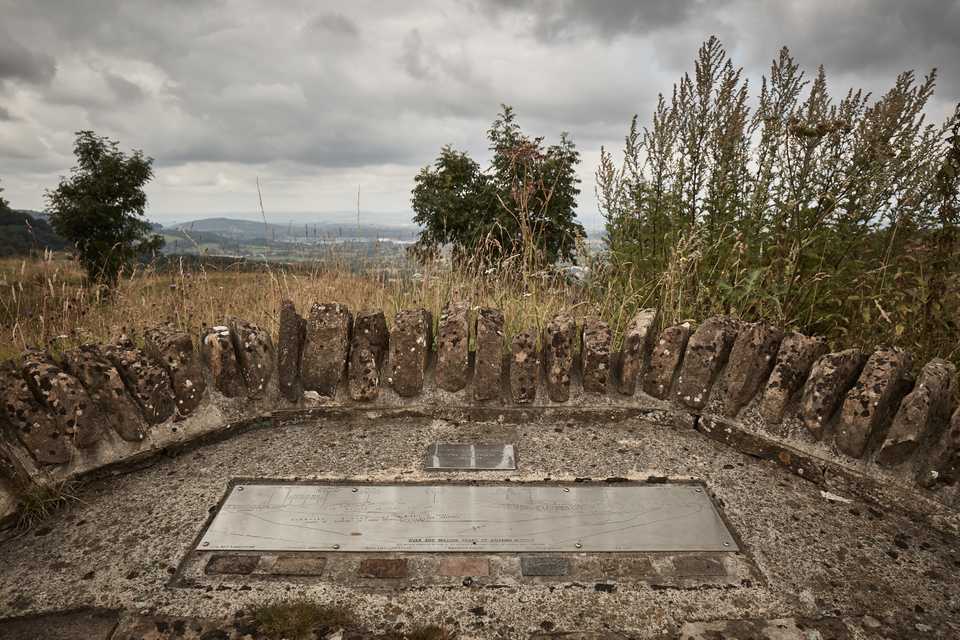Table of Contents
PEI Report Chapter 8 : Click Here
PEI Report Figures : Click Here
PEI Report Appendices : Click Here
Glossary and Abbreviations : Click Here

This section summarises the preliminary assessment findings at this point in the EIA process for cultural heritage, based on PEI Report Chapter 8: Cultural Heritage. Cultural heritage includes archaeology, historic buildings/structures and historic landscapes.
Baseline
The existing A66 runs through a landscape of considerable historical interest, with archaeological evidence present from prehistoric times up to the Second World War. The landscape comprises historical assets including scheduled monuments, listed buildings, a Registered Park and Garden and conservation areas in addition to non-designated sites ranging from find scatters to a rifle range.
Ongoing surveys are being undertaken as part of the EIA to enhance the understanding of the historic environment and to inform the assessment of archaeological potential.
Construction
Construction of the project has the potential for adverse impacts upon cultural heritage resources, including:
- Partial or total removal of heritage resources, including archaeological remains, within the project footprint
- Compaction of archaeological deposits by construction traffic and structures
- Temporary impacts upon the settings of heritage resources
- Permanent impacts upon the setting of heritage resources
- Changes to key views and sight lines
- Impacts to paleoenvironmental deposits as a result of hydrological changes
Mitigation of construction impacts will take the form of measures to reduce direct impacts (physical damage), and indirect impacts (changes to setting that affect the significance of the resources). Where significant effects have been identified on designated assets, including Listed Buildings, Scheduled Monuments and Registered Parks and Gardens (RPG) as a result of permanent changes to their settings during construction, options for mitigation will be further considered in the design process and will be reported in the ES.
Mitigation of direct impacts on archaeological remains would take the form of ‘preservation by record’, that is, the investigation of archaeological remains prior to construction, and the analysis of artefacts and publication of results following the construction of the project.
Preliminary construction assessment
- Permanent significant adverse effects are anticipated at the scheduled monument of the Ring ditches at Brougham
- Permanent significant adverse effects are anticipated to affect the Site of the Hartshorn Tree and associated cropmarks
- Permanent significant adverse effects are anticipated at the scheduled monuments of the Kirkby Thore Roman fort and vicus and the Roman camp at Redlands Bank
- Permanent significant adverse effects are anticipated at the Warcop Roman Camp and Length Of Roman Road, 285m South West Of Moor House
- Permanent significant adverse effects are anticipated to affect the Ring Ditch, 120m north-east of Poundergill
- Permanent significant adverse effects are anticipated to affect the Roman vicus at Carkin Moor Fort
- Permanent significant adverse effects are anticipated at the Roman Fort and Prehistoric enclosed settlement 400m west of Carkin
- Permanent significant adverse effect is anticipated to affect the Grade II* Registered Park and Garden at Rokeby Park
Not all potential likely significant effects listed above will occur for every scheme alternative. The summary table at the back of this NTS presents the preliminary likely significant effects on a scheme-by-scheme basis (including any alternatives considered for those schemes).
Operation
The operational phase of the project has the potential to result in both beneficial and adverse impacts on the setting of cultural heritage resources due to traffic noise and the visibility of moving vehicles on the road. Impacts could include changes to the settings of monuments or changes to key views.
There would be no physical impacts on below-ground archaeology during operation, as these would have occurred during the construction phase.
Preliminary operation assessment
- No significant effects are expected to arise from the operation of the project.